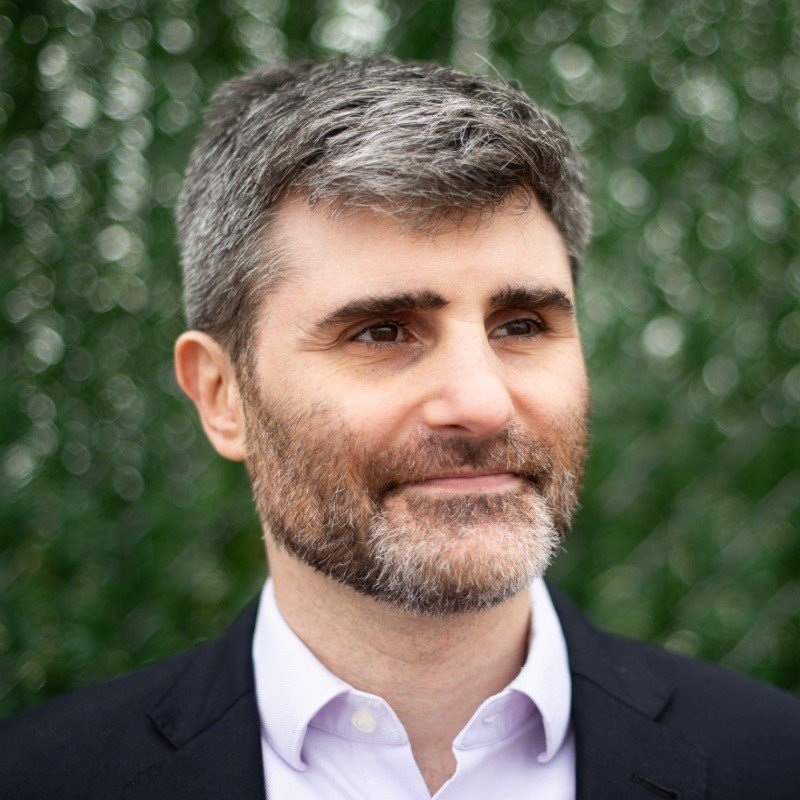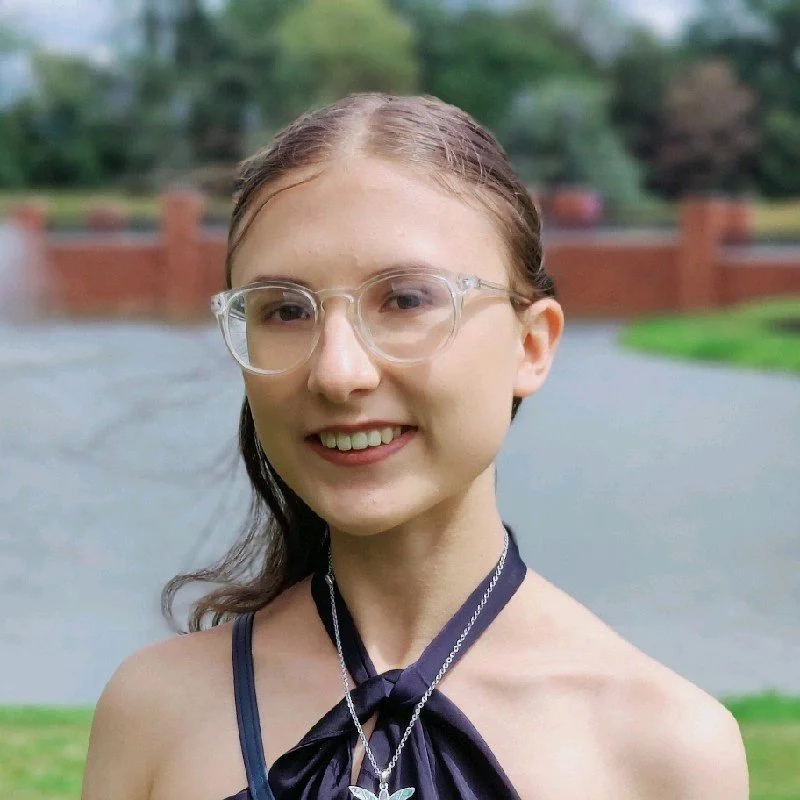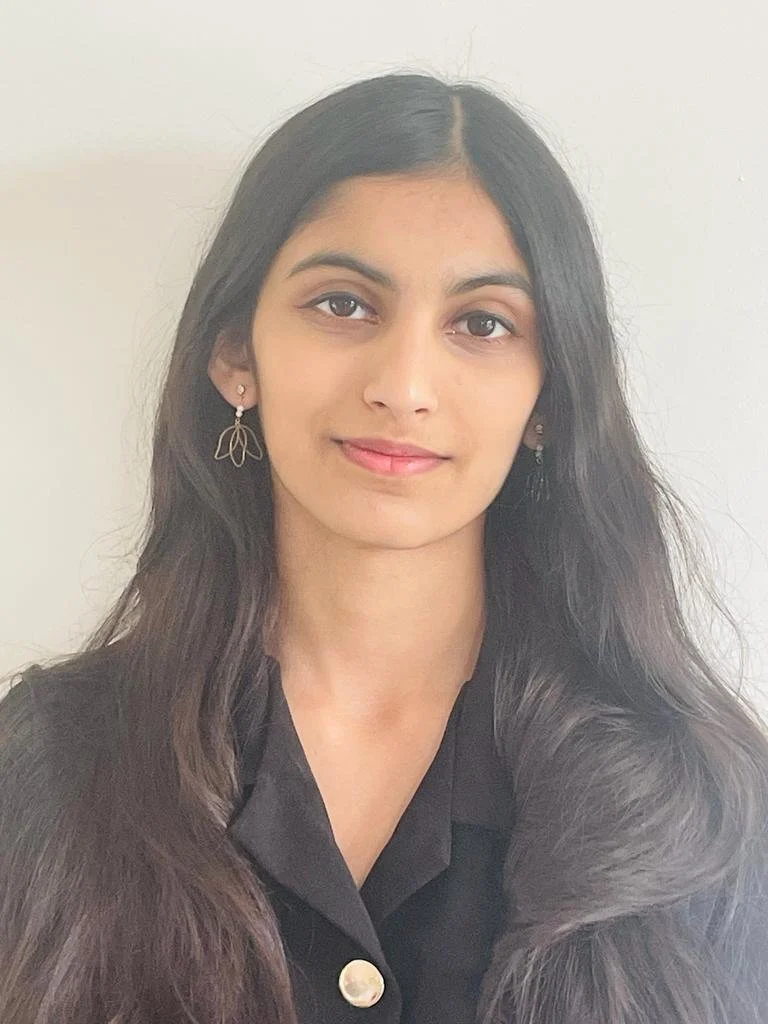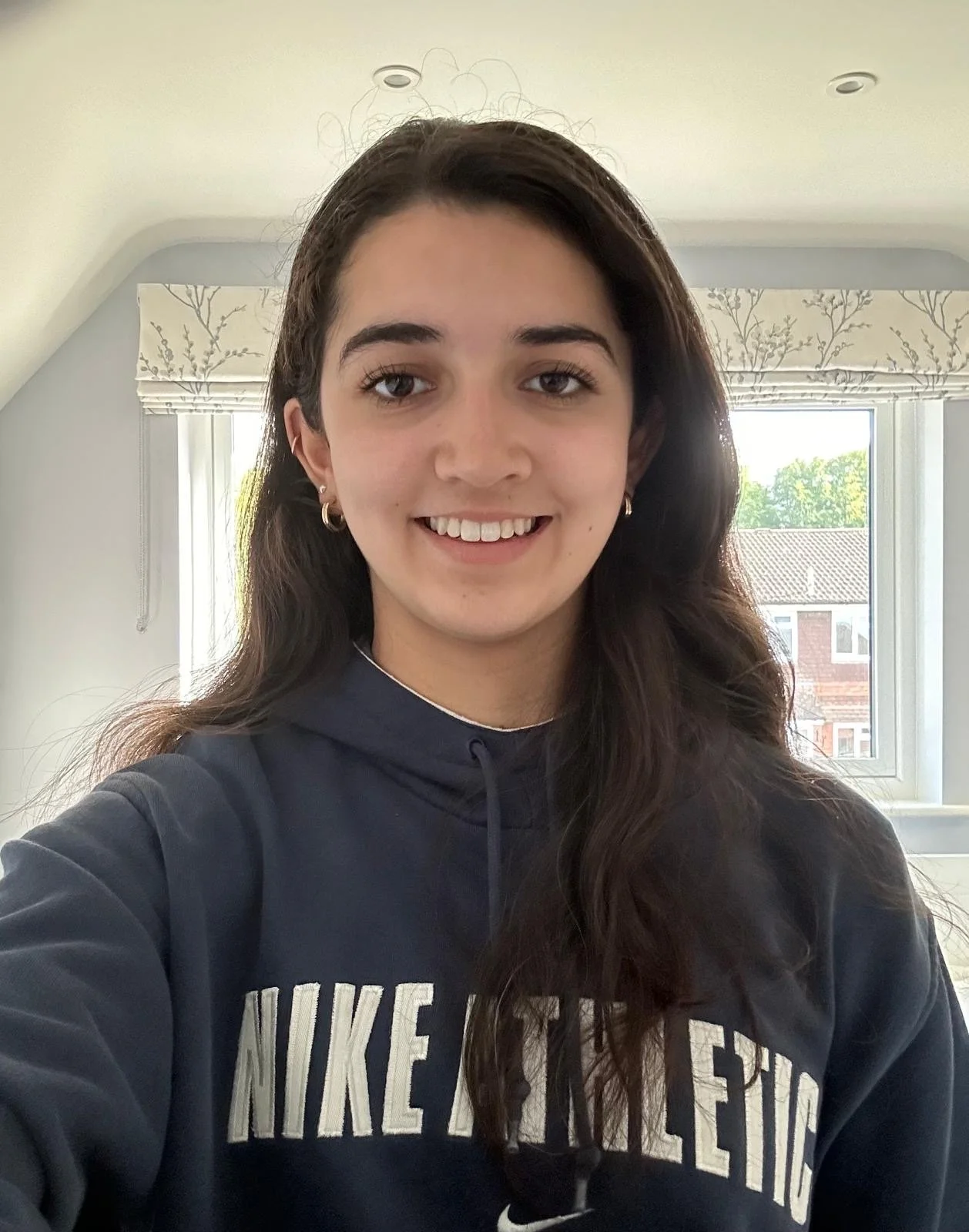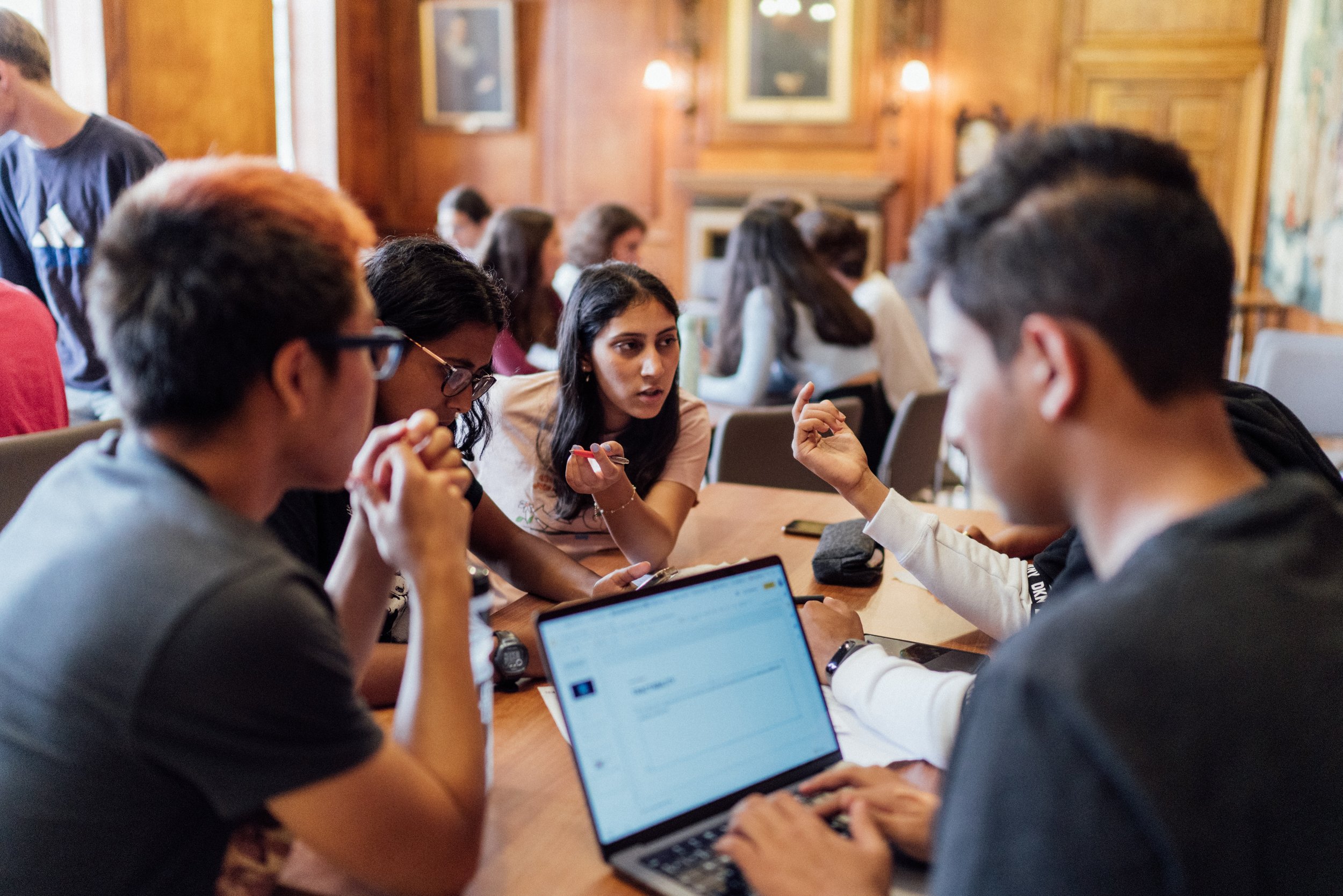
The Mathematics of Morality
Use maths to make the future better
Online program exploring how you can use mathematics to best help others and multiply your positive impact!
Dates: 19 January to 1 March
Who: Smart, curious, and ambitiously altruistic students aged 15-19 who haven’t yet started university
Cost: Choice of tiers based on ability to pay (i.e. free if needed!)
Top participants receive custom mentorship, referrals to selective next-steps, access to funding, and ongoing support!
What you can expect
Facilitated discussion groups with a cohort of smart, curious students
Talks and Q&As with professionals using maths to tackle pressing problems
Mentorship and referrals to pursue follow-up projects
Support with UCAS applications and Oxbridge interviews

97% of participants would recommend!
Surveyed at the end of our summer cohort, 97% of our 300+ Finalists ranked 7/10 or above on their likelihood to recommend this course; 35% said 10/10!
Plus, nearly 90% reported feeling more confident in their ability to make a positive impact after their course!
Course overview
-
How to 10x your impact by choosing causes carefully
The formula of truth: Bayes’ theorem
Scope insensitivity and the moral menace of neglecting numbers
Example resources:
🎥 YouTube video by 3Blue1Brown: “Bayes theorem, the geometry of changing beliefs”
📑 Blog post by Animal Ethics: “Scope insensitivity: failing to appreciate the numbers of those who need our help”
📚 Book by William MacAskill: Doing Good Better: Effective altruism and how you can make a difference
-
Quantifying the scope and scale of global issues
Expected value and probability theory: betting on big outcomes
How to quantify anything with Fermi estimates
Example resources:
📊 Interactive charts by Our World in Data: “Causes of Death”
💬 Interview with Hilary Greaves: “Expected value theory”
📝 LessWrong forum post by Luke Muehlhauser: “Fermi Estimates”
-
Careful comparisons: Financial models with real consequences
Counting neurons and other methods for weighing welfare across species
Predictions from the precipice: Climate modelling
Example resources:
📢 Media Release by the University of York: “The NHS is paying too much for new drugs”
📝 Forum post by Adam Shriver: “Why Neuron Counts Shouldn't Be Used as Proxies for Moral Weight”
🎦 YouTube video by metaRising: “Dystopian Futures of Astronomical Suffering”
-
Machine learning and AI: maths at the forefront of emerging tech
Mathematical modelling for pandemic preparedness and battling biorisk
Mistakes in the moral mathematics of existential risk
Example resources:
🎥 YouTube video by 80,000 Hours: “Could AI wipe out humanity?”
📚 Book by Toby Ord: The Precipice: Existential Risk and the Future of Humanity
🎙️ Critiques of Effective Altruism podcast episode: “Astronomical Value, Existential Risk, and Billionaire Philanthropy with David Thorstad”
-
Degrees and careers that capitalise on your strengths
Statistics in social science
Finance & quant trading: Multiply your income to maximise your impact?
Example resources:
🎧 Readout of an article by 80,000 Hours: “How to find the right career for you”
📑 Directory by Leaf: “Different potentially impactful career pathways, organised by degree subjects”
📝 Forum post by AGB: “10 years of Earning to Give”
Weekly structure
-
Dive deep into intriguing mathematical topics and advanced concepts using our curated resources, organised on our online learning platform with interactive videos, engaging quizzes, and other activities.
-
Weekly discussion with a Leaf facilitator and small-group breakouts to develop your critical thinking in conversation with intelligent, interesting, like-minded teens.
We’ll do our best to find a slot that works around your other commitments!
-
Get stuck into brain teasers and exercises that grapple with real-world issues. Get feedback and support from staff and peers.
-
Meet professionals who studied mathematics and are using what they learned to change the world.
-
Share your own knowledge plus join sessions run by Fellows and alumni! Meet inspiring peers with shared interests; collaborate on projects; discover exciting new ideas.
-
Discord channel, paired 1:1s, and opportunities to get to know peers with different backgrounds but shared passions.
-
Find study buddies and indulge in your mathematical hobbies — competitive or casual, impactful, impressive, or just intrinsically enjoyable!
Meet the staff and prior speakers
Our maths course is supported by a wide range of experts, facilitators, and alumni:
Spencer Greenberg
Mathematician and entrepreneur
-
Spencer is an entrepreneur with a focus on improving human well-being. He's the founder of ClearerThinking.org, which provides 80 free, digital tools to help people make better decisions and improve their lives, as well as the host of the Clearer Thinking podcast. Spencer is also the founder of Spark Wave. Spencer's work has been featured by numerous major media outlets, including The Wall Street Journal, the Independent, the New York Times, Lifehacker, Gizmodo, Fast Company, and the Financial Times. He has a Ph.D. in applied math from New York University, with a specialty in machine learning.
Sanjay Joshi
Finance, ESG, and charity founder
-
Sanjay is a seasoned actuary and entrepreneur with a background in finance, financial analysis, and charity impact. He founded SoGive (charity data and analysis), Finsimco (innovative financial education), Pandemic Prevention Network (self-explanatory!) and Talk It Over Chatbot (applying AI to help people who are feeling low). He is also an Impact and ESG specialist at the investment consultancy Hymans Robertson. He studied mathematics at Cambridge University.
Noah Siegel
Google DeepMind
-
Noah is a Research Engineer at Google DeepMind. After his research at the Allen Institute for AI in Seattle, he worked on machine learning for robotics at DeepMind before switching to focus on language model reasoning and explanations as part of AI Safety and alignment research. Having studied computer science, economics, and maths as an undergraduate, he is now pursuing a PhD in Artificial Intelligence at University College London via the UCL-DeepMind joint PhD program.
Vicky Cox
Charity Entrepreneurship
-
Vicky is a Research and Operations Analyst at Charity Entrepreneurship, which launches high-impact nonprofits by connecting entrepreneurs with effective ideas, training, and funding. She joined their incubation programme herself shortly after graduating from her degree in mathematics and actuarial science at the University of Southampton, but decided to stay on at CE rather than set up a new charity herself.
Jonah Boucher
Course designer and facilitator
Harvard Graduate School of Education
-
Jonah is a teacher and curriculum designer in the US. He has supported and led projects to help talented and passionate high school and college students lead impactful and fulfilling lives. Jonah recently graduated from the Harvard Graduate School of Education and previously came first in his class (of over 500) at Hamilton College with degrees in Mathematics and Environmental Science.
Alexander Barry
A/B Statistical Consulting
-
Alexander is a statistical consultant who works with organisations to help them get the most out of their data, especially impact-focused non-profits. He has a masters in statistics from the University of Oxford, and did his undergrad in mathematics at Cambridge. Recently he worked with the careers advice organisation 80,000 Hours to help them assess the cost effectiveness of their digital outreach.
The opportunities don’t end after five weeks!
Learn more here about our referrals to top research programs, connection to experts and mentorship, support and funding for projects, and other ongoing Leaf alumni opportunities!

Alumni perspectives









